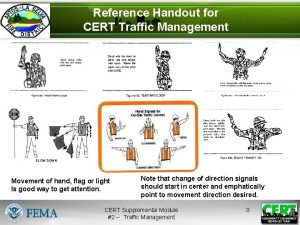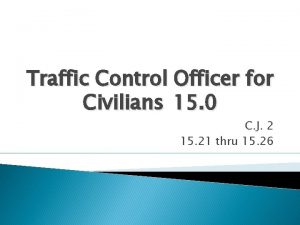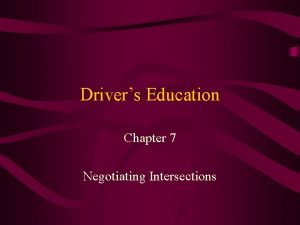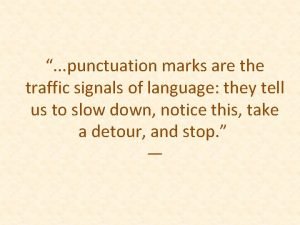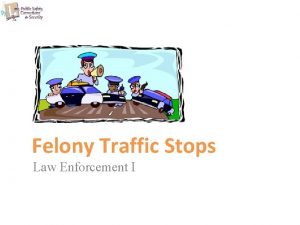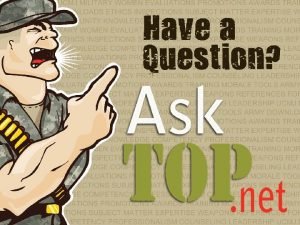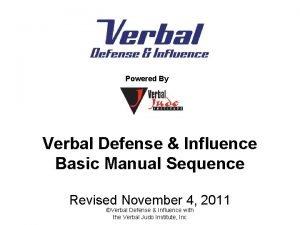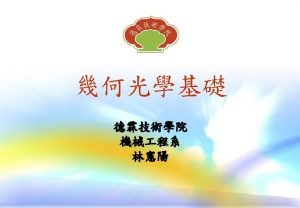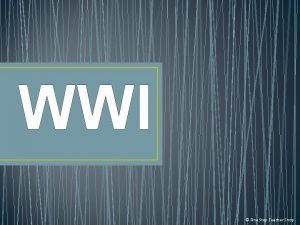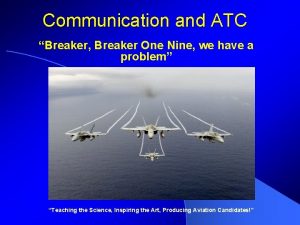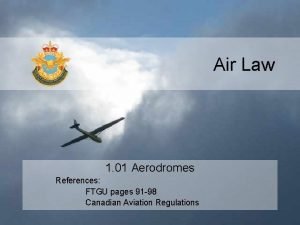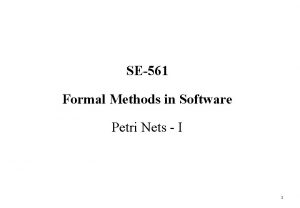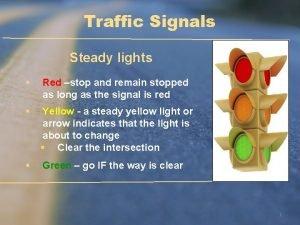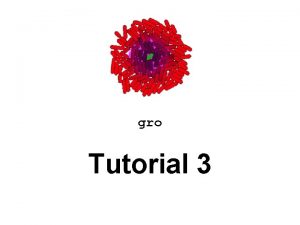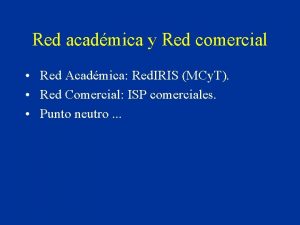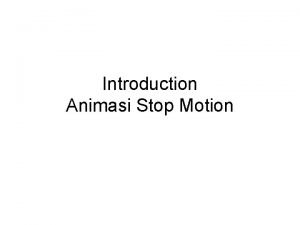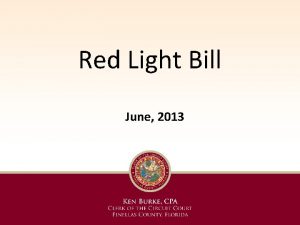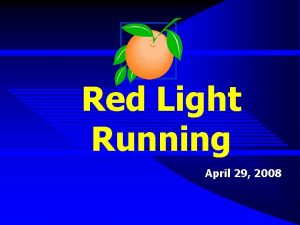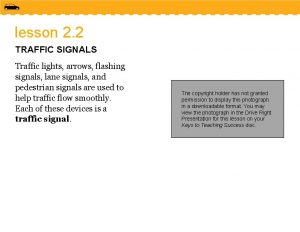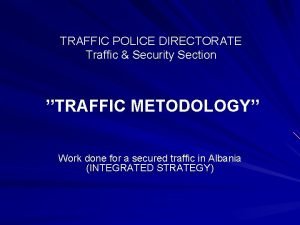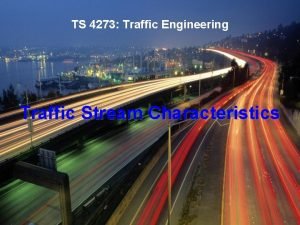RR Ch 10 Traffic Signals Red light Stop





















- Slides: 21

RR Ch 10

Traffic Signals • Red light – Stop at the marked stop line – If no stop line, stop before entering the crosswalk – If no crosswalk, stop before entering the intersection – You may make a right turn on red, only after a complete stop and yielding to oncoming traffic and pedestrians – You may make a left turn on red only when you are on a one-way street turning left onto another one way street

Traffic Signals • Yellow Light • Warns signal is changing • May not enter when light turns red

Traffic Signals • Green Light • May go after yielding to pedestrians and vehicles in the intersection or crosswalk • Can not go until intersection is clear

• Flashing red – Stop – Used at dangerous intersections – Used at railroad crossings to warn of approaching trains • Flashing yellow – Proceed with caution – Intersections – School crossings

Traffic Signals Arrows • Red arrow – Do not make the movement shown by the arrow until green arrow appears – You may make a right turn on red arrow after a complete stop and yielding • Yellow arrow – Arrows about to turn red • Green arrow – You may turn in the direction of the arrow • Flashing yellow arrow and green light mean the same thing – you can go left when no one is coming.


Pavement Markings • Edge lines – Solid white lines are used on the right of roadway edge – Solid yellow lines are used to the left edge of divided streets or roadways • White lane lines – Broken white lines separate lanes of traffic going in the same direction. Crossing the line is allowed only when changing lanes or turning

Pavement Markings – Solid white lines separate lanes of traffic going in the same direction. Crossing a solid white line requires special care and is discouraged, (heavy traffic) • Yellow center lines – Broken yellow lines separate single lanes of traffic moving in opposite directions. Passing is allowed – Solid double yellow lines are used where there are four or more lanes with traffic moving in opposite directions. Can not cross lines to pass

Pavement Markings • Yellow “No Passing Lines” – Solid yellow lines – When solid yellow line is on your side of the center line, no passing • Two-Way left turn lanes (shared left turn lane) – Used to make left turns – Can not drive down lane – Can stop in left turn lane to merge from side road

Pavement Markings • Other markings – Solid white or yellow lines are used to channel traffic around a hazard – A double white line prohibits lane changing •

Railroad Crossings • If gates come down or red lights flashing, must stop between 15 ft. and 50 ft. • If railroad grade crossing has no warning devices, look – listen – slow down

Railroad Crossings • Drivers who violate railroad crossing laws are subject to a $500 fine or 50 hours of community service • Some vehicles have to stop at most railroad crossings – Vehicles carrying people for hire – School buses – Vehicles carrying hazardous materials

Railroad Crossings • Railroad sign posted 750 ft. from tracks • Railroad crossbuck sign indicates number of tracks • Flashing red light means you must stop • When gates are lowered, you must stop. You can not drive around lowered gates







 Animals and human language chapter 2
Animals and human language chapter 2 Communicative signals and informative signals
Communicative signals and informative signals Communicative signals and informative signals
Communicative signals and informative signals Hand signals traffic
Hand signals traffic Traffic whistle signals
Traffic whistle signals Controlled railroad crossings usually have
Controlled railroad crossings usually have Traffic signals of language
Traffic signals of language Light light light chapter 23
Light light light chapter 23 Light light light chapter 22
Light light light chapter 22 Light light light chapter 22
Light light light chapter 22 Incomina
Incomina Intelligent traffic solutions
Intelligent traffic solutions Felony traffic stop
Felony traffic stop Felony traffic stop vehicle positioning
Felony traffic stop vehicle positioning Verbal judo leaps
Verbal judo leaps De lin institute of technology
De lin institute of technology One stop teacher stop
One stop teacher stop Light gun signals aviation
Light gun signals aviation Light signals aviation
Light signals aviation Movement vs non movement area
Movement vs non movement area Petri net traffic light example
Petri net traffic light example Traffic light controller verilog code and testbench
Traffic light controller verilog code and testbench



